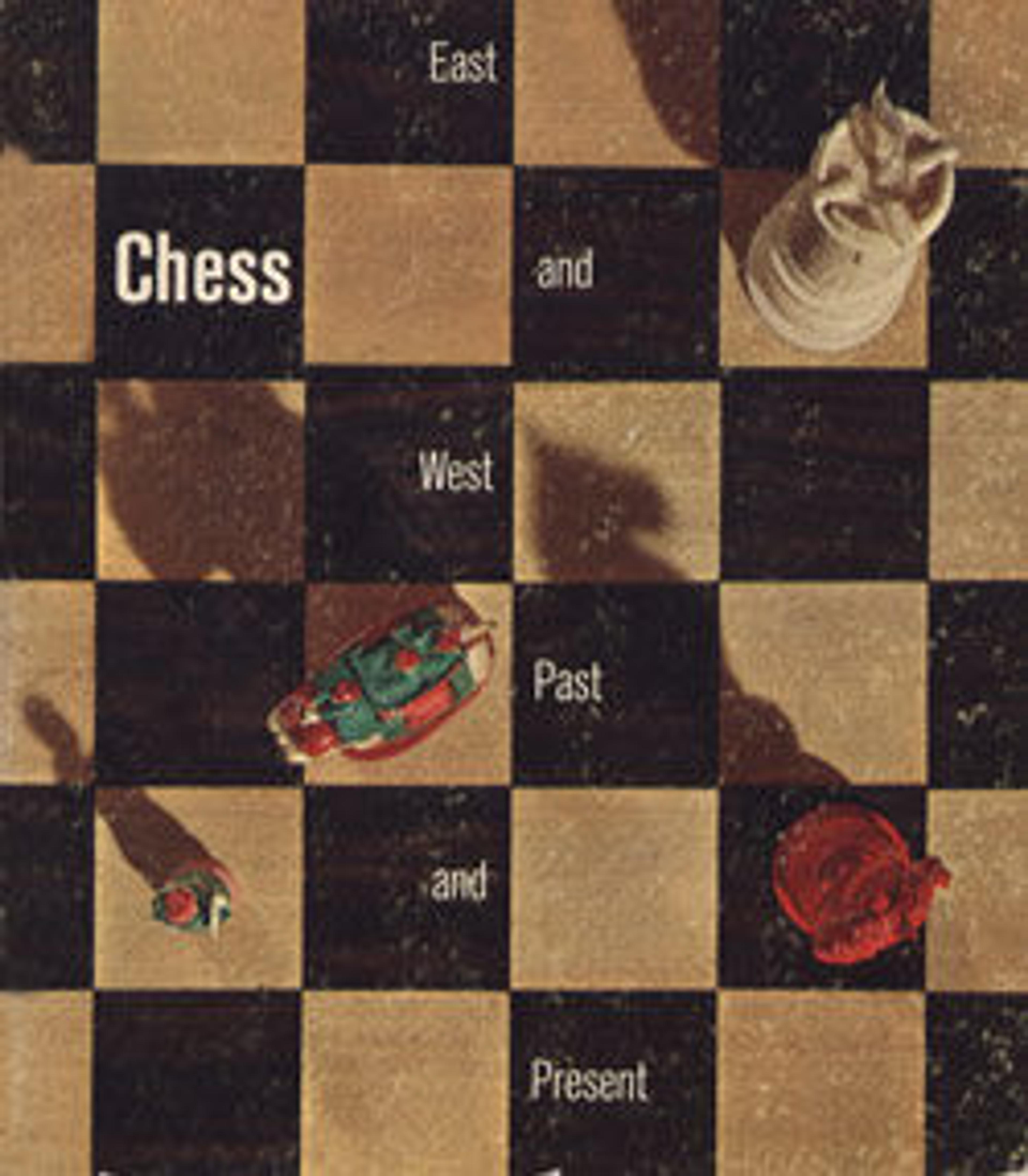Chessmen (72) with box-board for "double" chess
This set, which according to the card acquired with it, was made for Napoleon III, is for the game of Oriental War. Played on a board of 117 squares (nine by thirteen), it has twenty-seven white pieces and thirty-six red pieces. Each side has nine principal figures and nine knights, and there are nine pawns and eighteen red pawns. The nine principal pieces of each side include five historical figures. The white side, the coalition against Russia, has Napoleon III, the Sultan Abdul Mejid of Turkey, Queen Victoria, Marshal Pelissier of France, and General Alfonso La Marmora of Sardinia; the other principal pieces are the standards of France, Turkey, and Great Britain, and a tower representing Paris. On the Russian side are the Emperor Alexander II, the Empress Alexandra Feodorovna, Prince Michael Gorchakov, Grand Duke Constantine, and Prince Paskievitch (Russian commanders); also, three Russian standards and tower representing St. Petersburg.
The game of Oriental War is said to have been invented in 1855 by François Gilot, a French watchmaker at Civray near Vienne. The object of the game was to capture the tower representing Paris or St. Petersburg; the towers were non-moving pieces.
There is a box-board en suite, inlaid in silver with the French Napoleonic eagle and the legend Jeu de la Guerre d'Orient au double échec.
The game of Oriental War is said to have been invented in 1855 by François Gilot, a French watchmaker at Civray near Vienne. The object of the game was to capture the tower representing Paris or St. Petersburg; the towers were non-moving pieces.
There is a box-board en suite, inlaid in silver with the French Napoleonic eagle and the legend Jeu de la Guerre d'Orient au double échec.
Artwork Details
- Title:Chessmen (72) with box-board for "double" chess
- Designer:François Gilot (French)
- Date:ca. 1855
- Culture:French
- Medium:Ivory: stained and natural; ebony
- Dimensions:Height (tallest red, confirmed): 4 1/16 in. (10.3 cm);
Height (red pawn, confirmed): 2 in. (5.2 cm);
Height (tallest white, confirmed): 4 in. (10.2 cm);
Height (white pawn, confirmed): 2 1/16 in. (5.2 cm);
Overall (original box, confirmed): 5 3/4 × 21 7/8 × 15 5/8 in. (14.6 × 55.6 × 39.7 cm)
Overall (board): 3/4 × 21 3/8 × 14 3/4 in. (1.9 × 54.3 × 37.5 cm) - Classification:Chess Sets
- Credit Line:Gift of Gustavus A. Pfeiffer, 1948
- Object Number:48.174.65a–e
- Curatorial Department: European Sculpture and Decorative Arts
More Artwork
Research Resources
The Met provides unparalleled resources for research and welcomes an international community of students and scholars. The Met's Open Access API is where creators and researchers can connect to the The Met collection. Open Access data and public domain images are available for unrestricted commercial and noncommercial use without permission or fee.
To request images under copyright and other restrictions, please use this Image Request form.
Feedback
We continue to research and examine historical and cultural context for objects in The Met collection. If you have comments or questions about this object record, please contact us using the form below. The Museum looks forward to receiving your comments.
